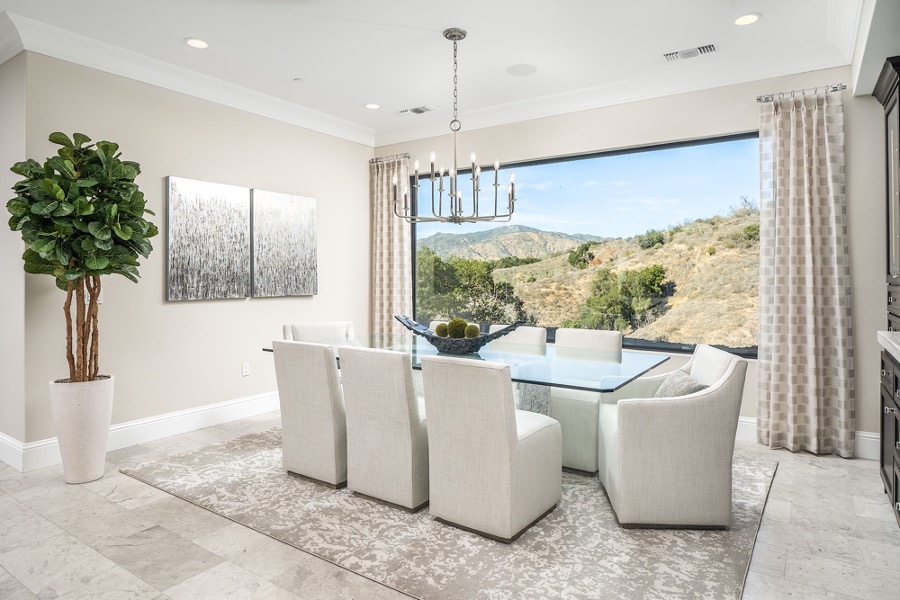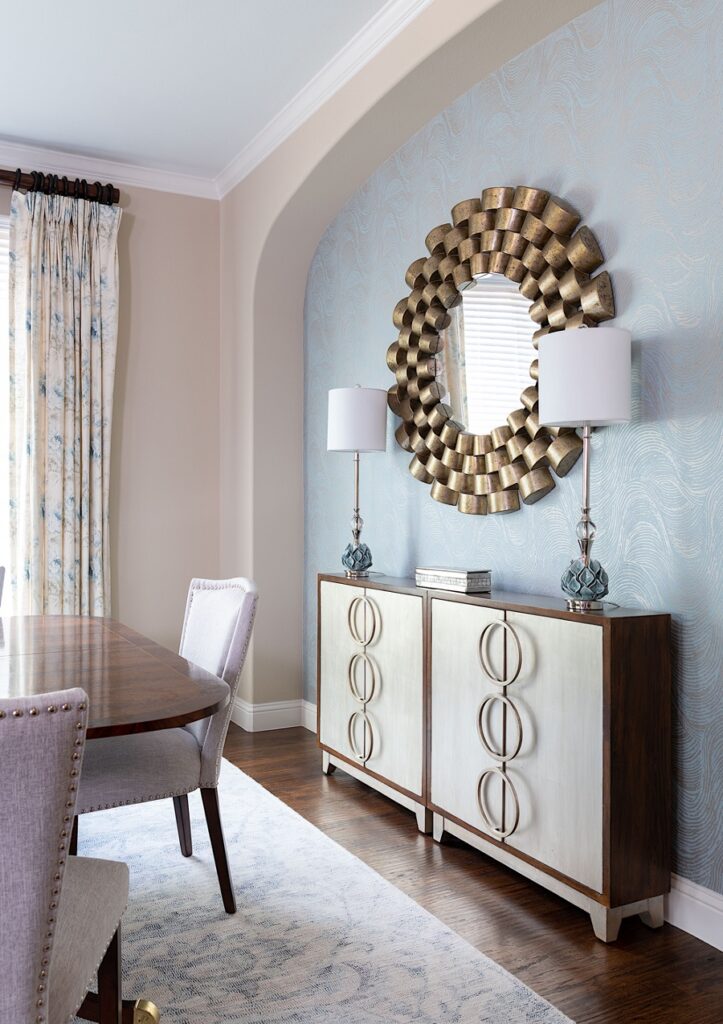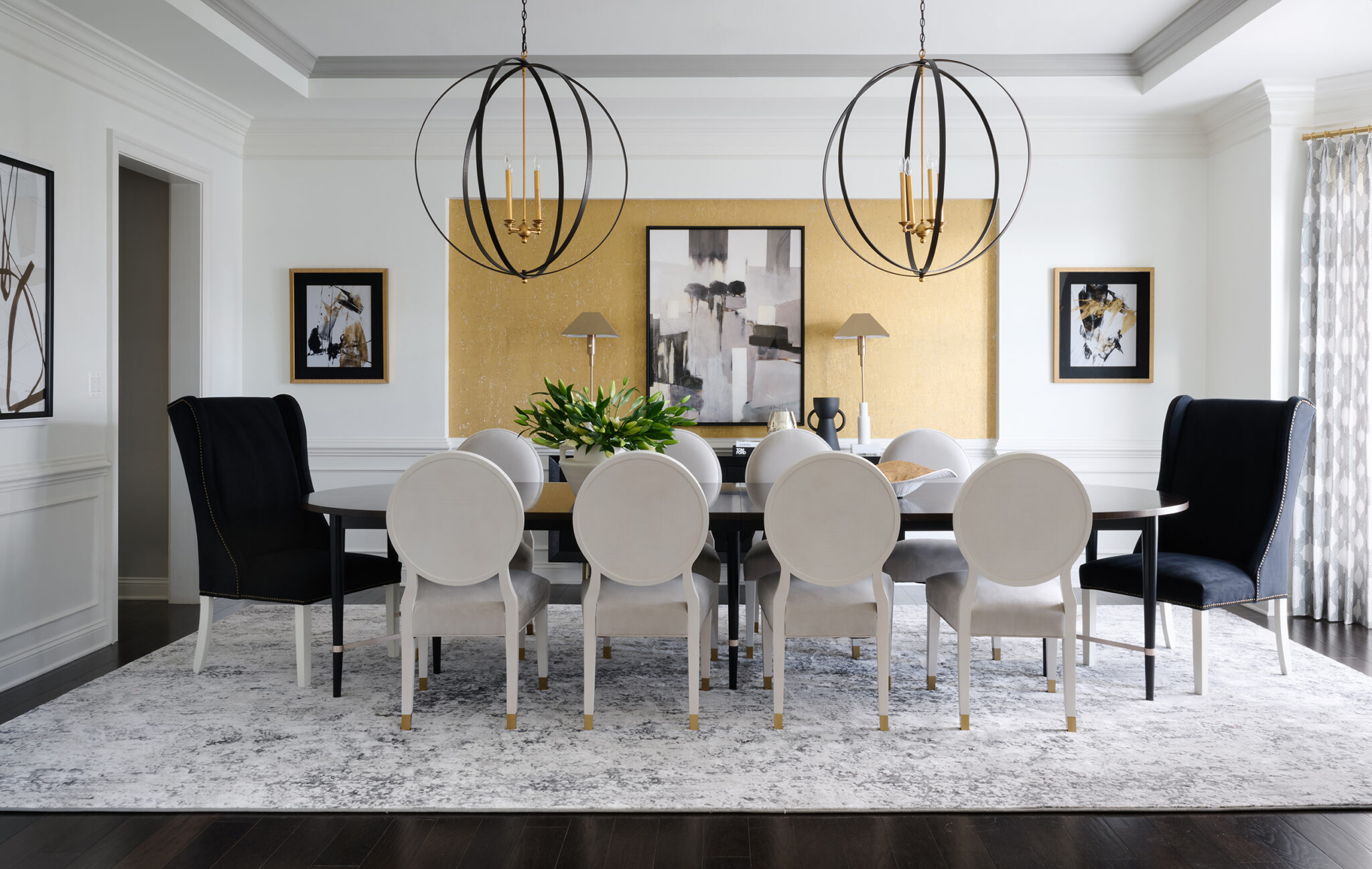Reading time 4 minutes
Tastes in dining room style are as varied as tastes for the food itself. Depending on personal preferences, individuals may incorporate elements from multiple styles to create a dining room that reflects their unique personality and lifestyle.
Over the centuries, dining spaces became more refined with elaborate furniture, tapestries, and artwork. The Victorian era saw the height of formality, with dining rooms often extravagantly decorated and furnished, elaborate table settings, and strict etiquette governing dining practices. In the U.S., Thomas Jefferson set the standard for the grand dining room.
With the rise of the Industrial Revolution, separate dining rooms became more common in middle-class homes, reflecting a growing emphasis on privacy and family life. The early 20th century saw a move towards more casual dining habits, influenced by changing social norms and the advent of smaller, more intimate family units. Dining rooms in middle-class homes became less formal, often doubling as multipurpose spaces for various activities. The dining room has evolved in recent decades in response to changing lifestyles and architectural trends.
Selecting the Table Shape
While the area and shape of the available space will dictate many decisions, the selection of the table’s shape and style may be the fundamental building block for creating the space’s design. That decision can help you settle on the overall functionality you want for the space.
The rectangular table has been the standard form since the ancients. Over time, it became more extensive and ornate with decorative features. The 20th century saw a variety of dining table shapes and styles emerge, reflecting changing tastes and lifestyles. Rectangular tables remained popular for formal dining rooms, while smaller round or square tables became common in kitchens and breakfast nooks. Round or oval tables promote more interaction because each guest can see everyone’s face.

Additionally, modular and extendable tables have become popular for their versatility and space-saving features, especially in smaller homes and apartments. To make a smaller space look larger, consider a glass-top table. Glass creates the illusion of space and gives a room a light, airy feel.

Dining Room by Michelle Jett
Storage
Furnishings chosen for storage should align with the available space. Fortunately, there’s a wide array of options today. Dining room storage units can cater to diverse needs, holding everything from dinnerware and glassware to table linens, serving utensils, and additional pantry items.
Storage pieces also give you surfaces to display art or other accessories to add personality to your space.

Today’s dining spaces vastly differ from the dark traditional look with intricate moldings, elegant heavy draperies, and large wooden tables. Color is now more common in dining areas. Even a traditional look can have more visual interest with patterns and texture.
The style choices are numerous. You can have the clean lines, minimalist aesthetics, and functionality of modern/contemporary. Or, yes, farmhouse rustic. You may prefer Scandinavian simplicity or an industrial look. There are even more choices with Bohemian, coastal, mid-century modern, eclectic, and traditional.
With so much to consider, professional assistance can help you avoid mistakes. Contact us today to transform your dining space.
Join Our Newsletter
If you enjoyed reading this interior design blog, sign up for our monthly newsletter. They’re never too long and will brighten your day!










